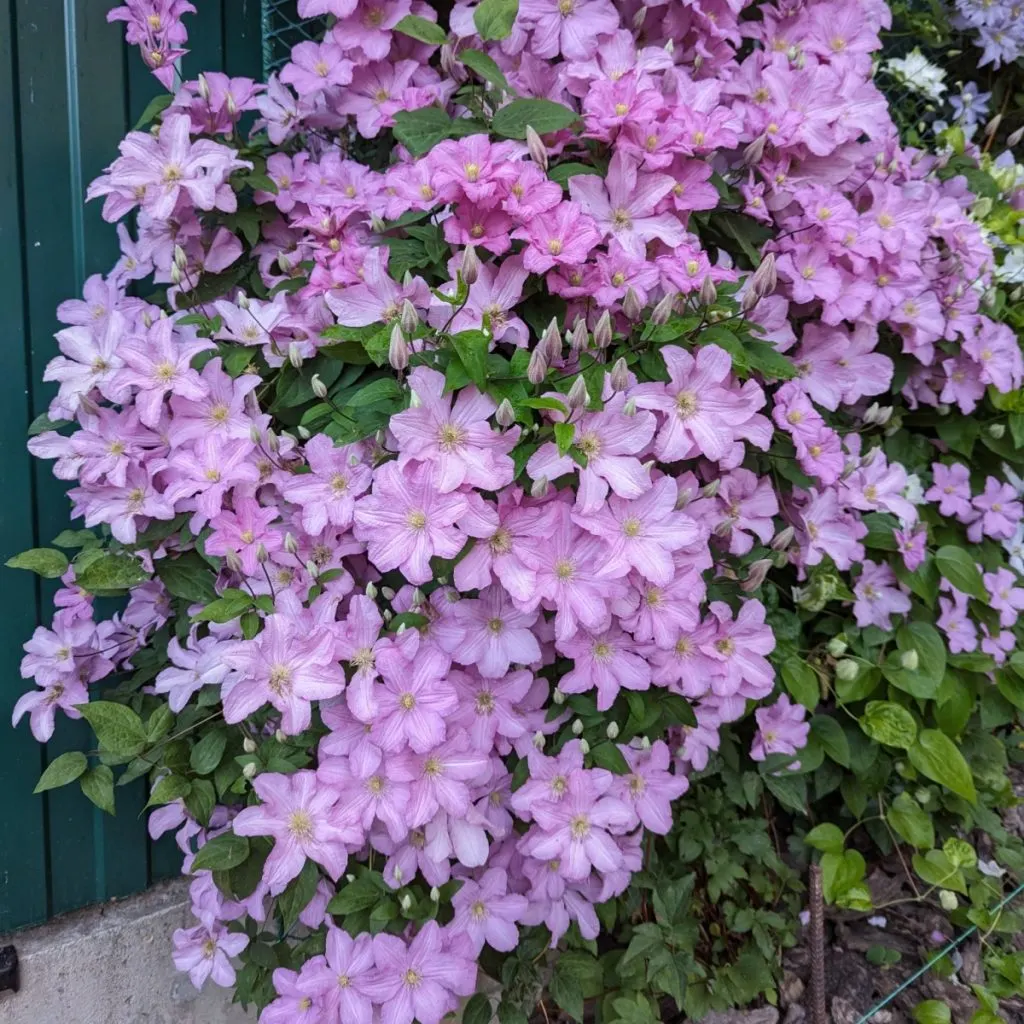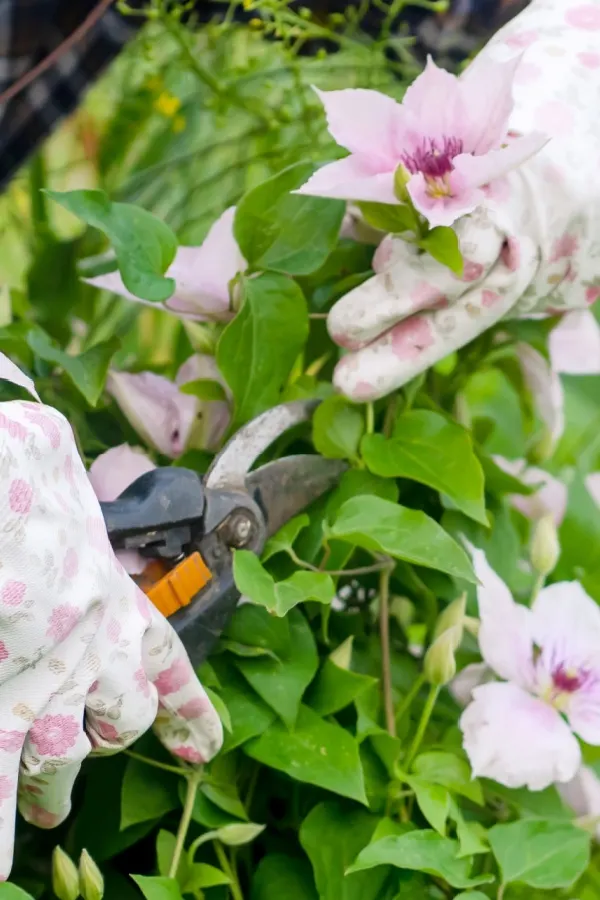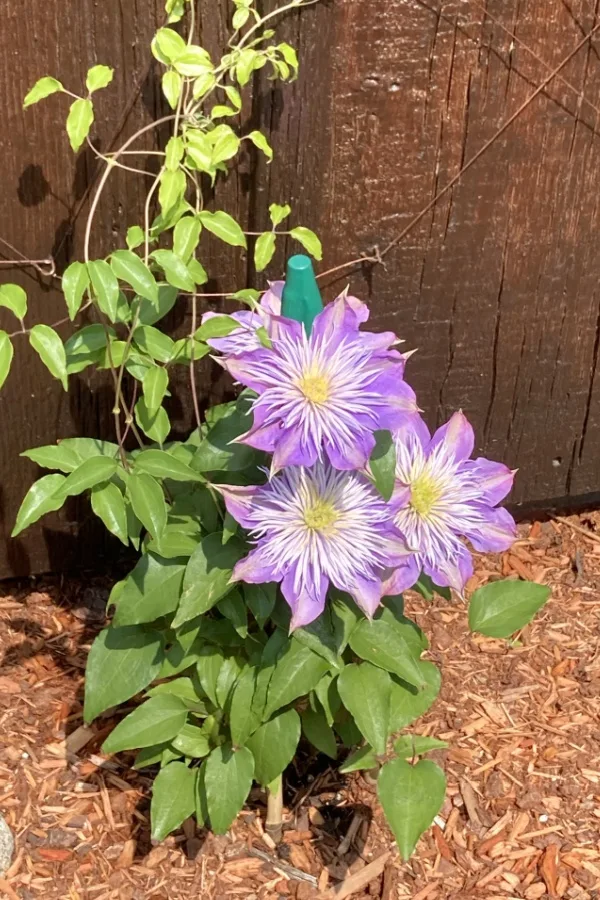What you do with clematis after it blooms can make a big difference in the health and blooming potential for the following year – but did you know that it can also allow clematis to bloom a second time within the same year?
Clematis is a perfect perennial for adding vertical interest to your property. Not only does the plant push out loads of vibrant blooms year after year, but the green foliage is great for adding visual appeal to trellises, arbors, and fence lines.
During the spring months, clematis pushes out gorgeous blooms in a whole host of colors. From pink, red and purple – to white white, yellow and variegated types, there’s definitely a variety that will fit into any landscaping design.

As a perennial, clematis plants can live for over twenty years or more – all with very minimal care. And while their star-shaped blooms are beautiful in the springtime, wouldn’t it be nice to enjoy those blooms again in the summer months?
Well, not only is it possible to get clematis to bloom a second time, but it’s actually quite easy. It all comes down to deadheading blooms, applying the right fertilizer and a few other simple chores that if taken care of promptly after your plant stops blooming, can allow it to bloom again!
What To Do With Clematis After It Blooms
Deadhead Spent Blooms
The first big task for clematis while it blooms and after it blooms is deadheading. While some plants can self-clean their blooms, clematis plants need a little help in that department.
The reasoning behind this simple task is that it allows the perennial plant to conserve precious energy for a possible second blooming. Even though individual blooms start to die off after a few days, the plant still uses up energy trying to heal the fading flowers.
This wastes resources that could otherwise be saved and stored for future use. In addition, as the blooms die off, the plant uses up even more energy to form seed heads on the stems of dying flowers.

But when you snip off the fading blooms and seed heads, all of that energy use stops. And it does so immediately. Even better, regular deadheading has the added bonus of keeping your clematis looking good too!
To deadhead clematis, simply snip off the old blooms right below to the next set of leaves. Deadheading blooms at least once a week can make a huge difference between a plant that only produces foliage for the rest of summer, or one that blooms for a second time.
Fertilizing After Clematis Blooms
The second task to care for clematis after it blooms is fertilizing. But not just any type of fertilizer will do! Instead, you want one that helps to replenish the specific energy to help it recover and recharge.
Clematis plants spend a ton of energy and resources to push out massive amounts of blooms in the spring. (To learn about fertilizing clematis before spring blooming, see “How To Fertilize Clematis In Spring”.)
If those nutrients aren’t replenished after flowering, there will be nothing left to power a second set of blooms. But even if you are not trying for a second bloom, the nutrients lost during the initial blooming period still need to be replenished to keep the plant healthy and lush for the remainder of the summer. And even more, to help it store energy for next spring’s blooms!

So what is the best fertilizer to use after clematis finishes blooming? To encourage a second bloom, avoid using any fertilizers that contain high amounts of nitrogen. This nutrient causes the plant to focus its resources on producing new foliage – something that clematis doesn’t really need.
Instead, look for a fertilizer that focuses on producing and supporting blooms. Specifically, one that has a higher amount of phosphorus and potassium to help it get power for re-blooming. Product Link: Dr. Earth Flower Girl Bud & Bloom Booster
Choose a fertilizer that has at least double the amount of phosphorus and potassium as it does nitrogen to help encourage blooming. You can do this by looking at the N-P-K (Nitrogen-Phosphorous-Potassium) label that will tell you the exact makeup of the fertilizer ingredients.
Additional Tips – What To Do With Clematis After It Blooms
In addition to deadheading and applying the correct type of fertilizer, there are a few other post bloom tips that can really help clematis to recover and possibly even re-bloom.
First, clematis plants like to have their roots cool and shaded while the foliage and blooms receive full sun. To help accomplish this, apply a thick 4 to 6-inch layer of mulch around the base of each plant.
The mulch will work to keep the soil cool when temperatures rise throughout the day. At the same time, the mulch also help retain moisture levels and prevent competing weeds from growing.

Proper Watering
Although mulch will help conserve water, proper watering is still a must. Especially if you are trying to get a second set of blooms out of your plants.
During the plant’s first blooming period, it usually receives plenty of moisture via spring rain showers. However, once summer arrives, the hotter temperatures and dryer air can quickly zap plants of moisture.
Clematis plants require around 1 to 1.5 inches of either rainfall or hand watering weekly. Instead of watering plants a little bit every day or two, give clematis plants a good deep drink a few times a week when rains are sparse.
This will help to encourage the roots to grow down deep into the soil. The deeper they grow, the more easy it is for the roots to find moisture as well as nutrients. In addition, deeper roots stay much cooler during the hot summer months.
Here is to giving your clematis the care it needs after it blooms – and to getting a second colorful show of flowers this summer from your plants!
Simple Garden Life
Follow Our Facebook Page For Even More Great Tips! Simple Garden Life Facebook Page
Simple Garden Life is a website dedicated to keeping gardening fun, simple and enjoyable! We publish two new articles each week along with a new garden podcast episode every two weeks. This article may contain affiliate links.
